Isuzu: At the slower pace of 1800 rpm (aboutt 83 km/hr), the fuel consumption fell to around 15.5 L/100km. While we travelled slower than most on the dirt, perhaps the larger wheel diameter made the corrugations a little more bearable. Embedded rocks, grids and lumpy bitumen were the uncomfortable bits for us.
Hot Water System: The apparent leaking caused us no issue just a level of concern as we didn't know if it was a sign of something more significant about to happen. A bit of tightening and explanation about one source of the drips (pressure relief valve) put our minds at rest. The heat exchange between the truck and the house HWS is one of the best features of the truck.
Electric Steps: After the two occasions of blowing the fuse, there was no further issue. The electrics were tested without any sign of malfunction. The thought is that the connector plug was affected by either dirt or water. This plug had been pulled apart looking for any obvious problem while we were away, so perhaps this solved it or it dried out of its own accord. The product probably doesn't have enough protection given its intended use on recreational vehicles.
Dust: 3000 km - none!
Leaking window: Two days of rain in Alice Springs saw the toilet window leaking. Again we were lucky that it was this window in the "wet" area. This has been fixed by re-doing the sealant.
Air Head Composting Toilet: Yes there are people who are interested in this! At one point we had a "hint" of an odour when we opened up after a long travelling day. We couldn't agree on whether it was from the toilet or the creek outside. We have finally concluded that the liquids tank should be emptied at least every third day regardless of the volume stored. The sugar and vinegar process works without issue in that time frame (we've had temperatures up to 30 degrees C). The truck sat for 10 days at home after this trip with a clean liquids tank and only occasionally did we remember to turn the exhaust fan on for the solids tank. No odour at all. So far - very impressed.
Shower: Further tweaking of the shower curtain and addition of some silicon pads under the cedar shower mat have improved the shower use. While we asked for two drain points in the shower tray, the reality is that the truck is almost never level - as far a water drainage is concerned. The excellent cedar mat made by Michael sat directly on the base and sometimes stopped water draining. Lifting the mat a few millimetres off the floor with the silicon pads solved that issue. It also means that both the timber and shower base dry off more quickly. The other thing we did not consider is that the shower curtain falls vertically - yes . . . which can mean not exaclty over the shower tray if the truck is not level. A small piece of velcro at one corner and the removal of the excess folds of fabric has fixed that issue. Our original design contemplated a shower area enclosed with a fixed wall. We are so happy that we abandoned that idea - simple has turned out to be the best choice. The lack of fixed wall or door means that the floor space is easily used for other purposes eg reaching into the truck cabin, temporary storage of boots, shopping etc. The point was to maximise usability of available space. Assigning 0.7 of our sq metres solely to a shower space that is used for maybe 10 mins per day didn't make sense. Hence the shower being our access to the truck cabin. With only 8 sq m of living space we needed to maximise the "feeling" of space. The shower curtain is gathered to one corner and 99.9% of the time this space is available both physically and "visually".
It all works!


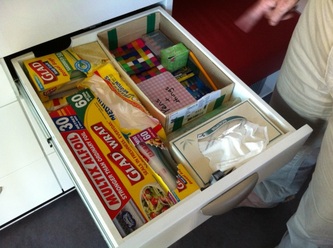
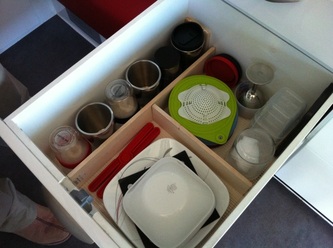
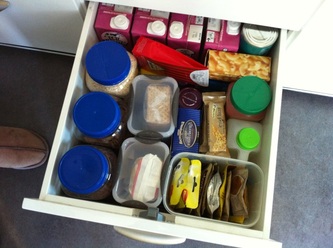
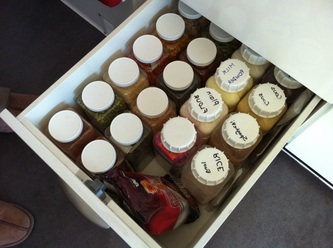
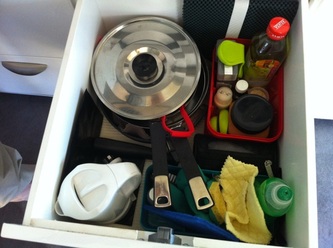

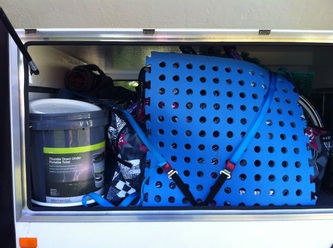
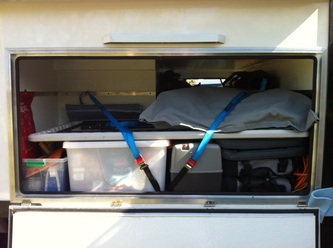
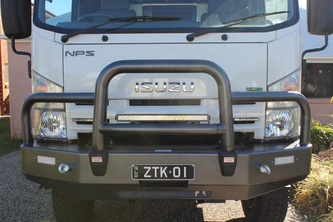


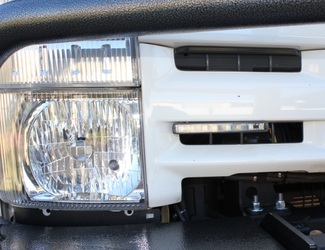
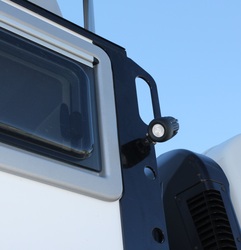
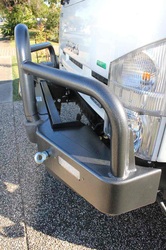
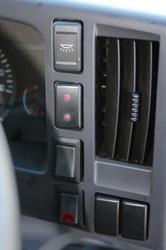

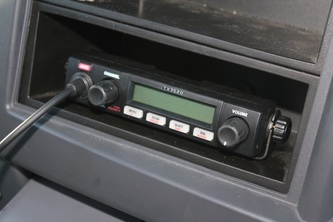

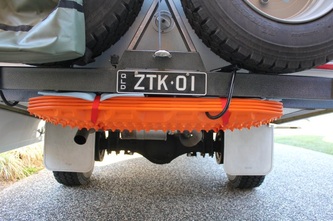

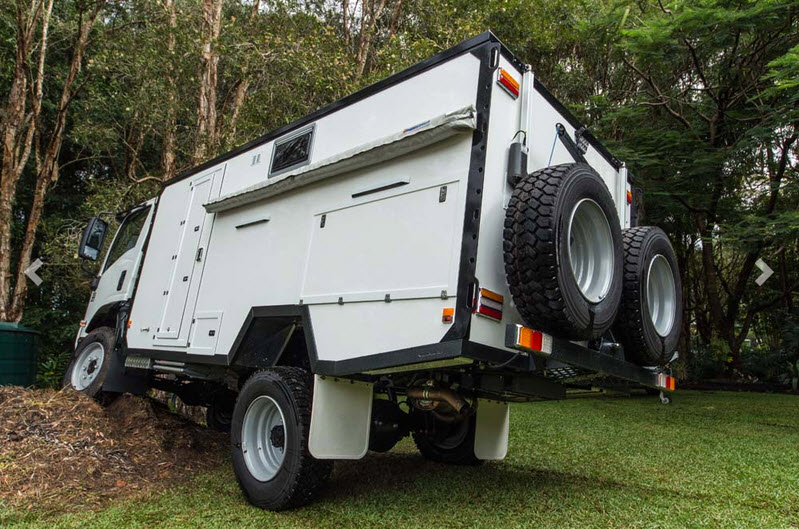
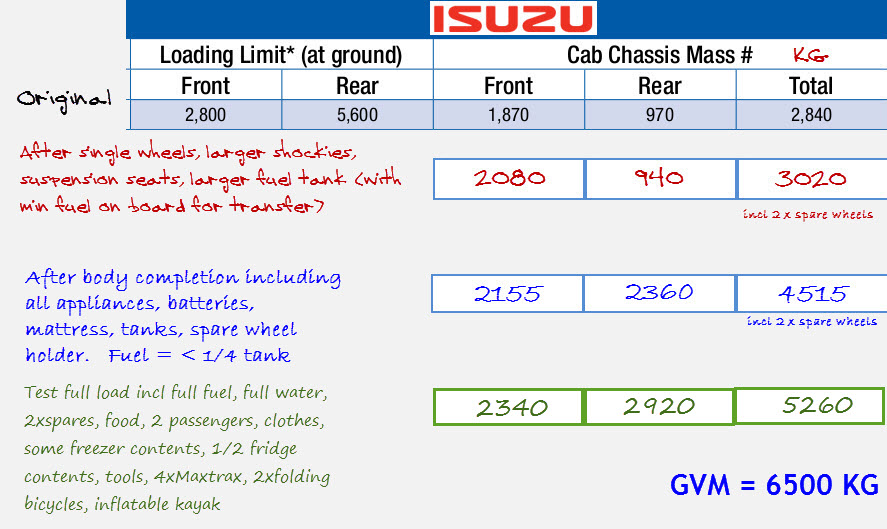

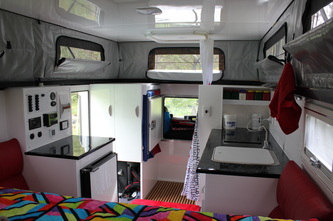
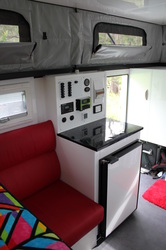



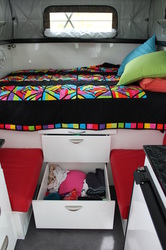
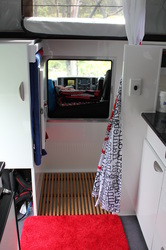
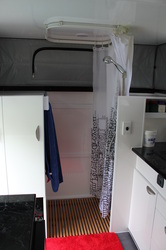

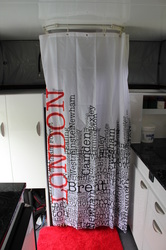
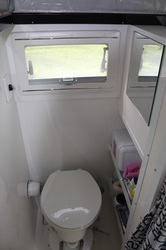




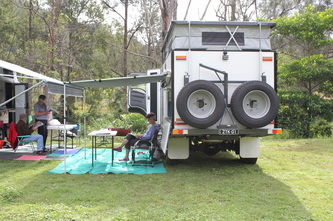

 RSS Feed
RSS Feed
